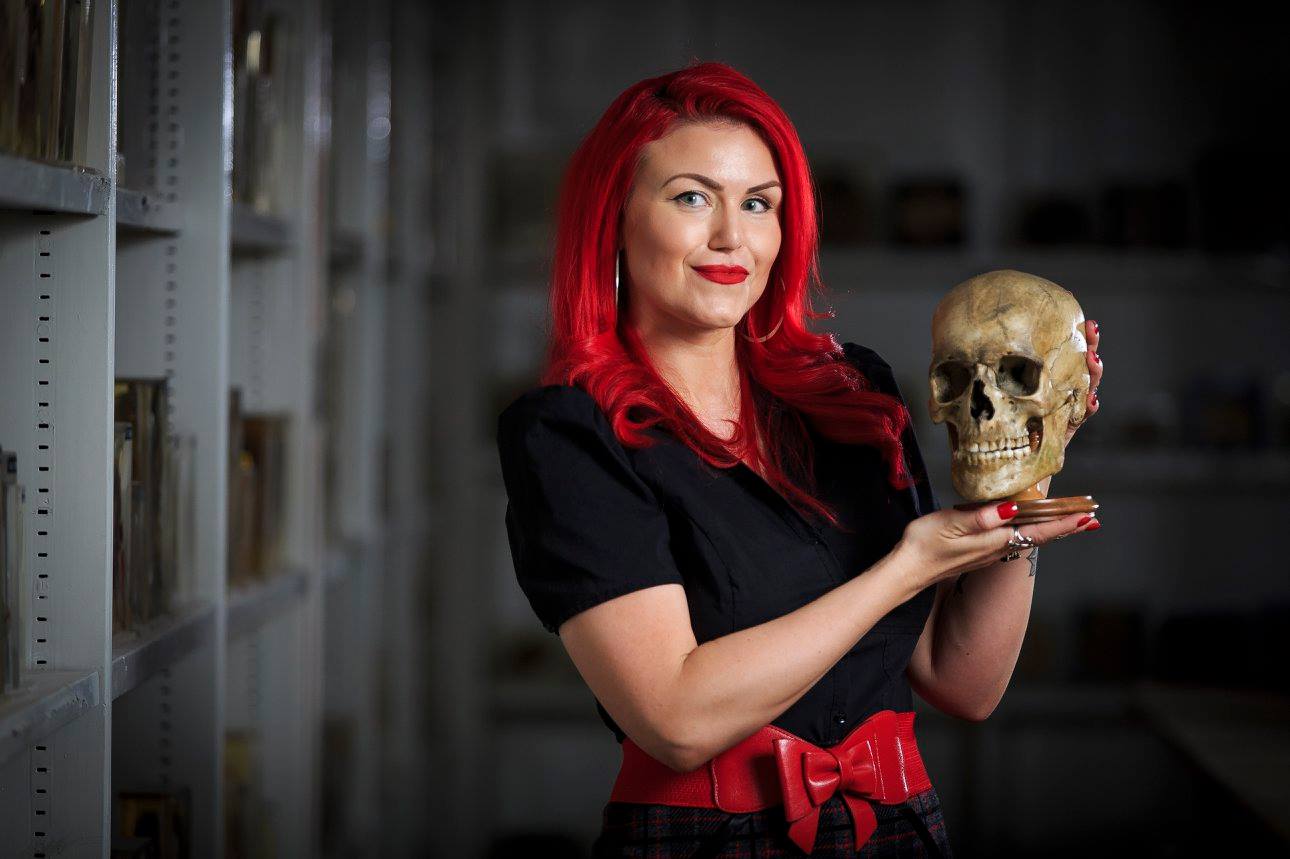How would you introduce your job to someone at a party?
It depends if I want to be the ‘life and soul’ of said party or hide in the shadows quietly! If I don’t want to draw attention to myself, I make something up. But if I’m happy to answer questions about my field the easiest thing is to say I’m a mortician because straight away an uninitiated party guest will know that – in one way or another – I ‘work with the dead’. I think that’s important to me because this particular vocation has been my passion for such a long time and has become a part of my identity.
I used to carry out autopsies alongside a pathologist on what we’d consider to be the recently deceased, although sometimes decomposition was very advanced and the deceased not so recent after all. However, now that I work on anatomical specimens at the Pathology Museum they differ in that they’re 100 or so years old. The work is the same though: I’m still examining human remains to try to get them to tell a story about their life and death.
How did you find your way into this role?
I think it was fate. As I mention in my book, Past Mortems, I’d wanted to work with the dead in a mortuary, and in forensics, since I was a child. I kept to that dream, as strange as it may seem to some! I studied forensics, volunteered at a mortuary, became employed there and worked my way up to senior level with a move to London. But I’ve always been very creative and outside of work I attended events about death with more of a humanities slant: art, literature, history, etc.
I decided to become voluntarily redundant from the mortuary I was working in. At senior level there was more paperwork than post-mortems and that isn’t what I wanted. After a few months of travelling, starting my book, and following some other pursuits I began work at Barts Cancer Institute (BCI) at Charterhouse Square, dealing with tissues retrieved for research. It was there that I heard of the Museum and a job being advertised (before, I had no idea the Museum even existed, or that it was so close to Charterhouse!). I popped over one lunchtime to see the Learning Resources Manager, Steve Moore, about the post and the rest is history. Suddenly I could combine my love of pathology with public engagement in the humanities. It was the perfect role for me and I wouldn’t have known about it if I hadn’t been at BCI, so that’s why it feels like fate.
Why should people care about what happens to us after we die?
I’ve just written about exactly this issue in The Guardian, in ‘Why you should donate your body to science’. Although we are developing increasingly advanced ways of teaching medical students how to virtually dissect ‘cadavers’, this isn’t a new trend. Generations before us have sought to supplement medical teaching with various analogues made from wax, papier-mâché, and even soft metal. However, they are just that: supplementary. There is no replacement for a donated human cadaver in a teaching environment, not just for a more tangible realistic experience, but because the special nature of a human body teaches students respect and dignity in death – something that papier-mâché or pixels can’t do.
What is the most interesting item you have in the Pathology Museum?
There are so many to choose from but I would say the most interesting to me is the specimen of a liver from 1907, with a deformity attributed to “tight-lacing.” The inference from the doctor at the time is that because the woman wore a very tight corset for nearly 24 hours a day, her liver became damaged and deformed, and a cleft in the organ created an extra lobe. However, I’ve shown this specimen to three modern pathologists and they all say it’s actually a congenital abnormality called Reidel’s Accessory Lobe. It’s nothing to do with the corset. I find that fascinating as it shows the evolution in medical thinking and usefulness of different technology over the years, and it’s still a relevant specimen – despite being from 1907 – because corsets are currently experiencing a renaissance, just like they did in the 1950s.
What does history mean to you?
For me history is something that I see as cyclical rather than linear, and it’s a way to re-inform ourselves and add weight to current arguments and theories. The phrase ‘history repeats itself’ is uttered so frequently it’s probably lost all meaning, but even in my very specific corner of research I see these cycles time and time again. There was a public outcry about Gunther von Hagens’ plastinated specimens that displayed the anatomy of consenting adults very explicitly from the 1990s onwards, but the process had practically already been done by Jean-Honoré Fragonard in the 1700s, using non-consenting bodies. Medical historians like myself couldn’t understand what the fuss was about! Similarly, Victorian medical museums were closed down and destroyed via the Obscene Publications Act in the late 1800s, causing beautiful wax models and potted anatomical specimens to be destroyed. Then, when the organ retention scandal unfolded in the 1990s, there was so much fear about existing holdings of human remains in different institutions that incredible and rare prosections [dissections to display anatomical structures] were incinerated as it was easier than trying to license them. There must come a time when we learn from history and don’t repeat the same mistakes over and over, before we lose all the precious medical material culture we’ve worked so hard to preserve.
Carla’s book, Past Mortems: Life and Death behind Mortuary Doors, is OUT NOW

